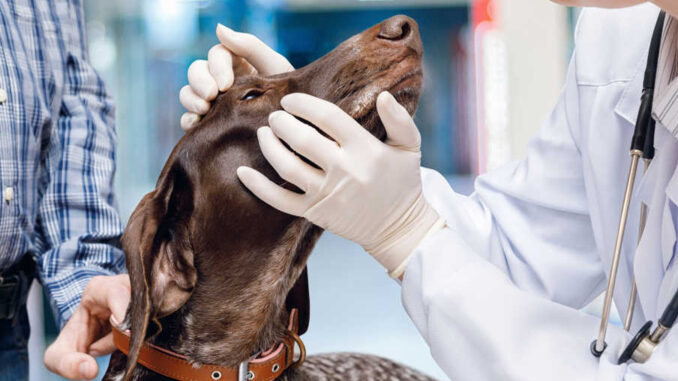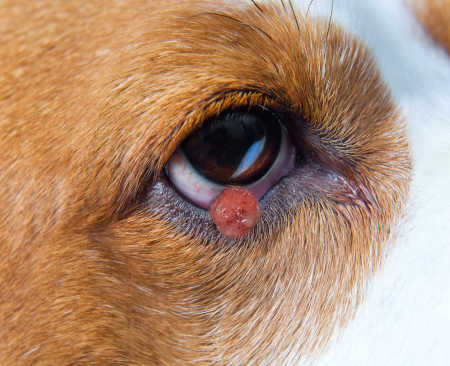
This article was updated on March 8th, 2024
What are meibomian gland tumors in dogs?
Many eyelid tumors are overgrowth of the meibomian gland, as shown in the picture below.
The most common types of meibomian gland tumors are adenomas (which are benign), and adenocarcinomas (which are malignant). Both tumors arise from the meibomian glands, which line the eyelids and are critical for producing the oily portion of tears.

Benign tumors are the most common and are usually seen in senior dogs. They appear as slow-growing bumps on the inside or outside of the eyelid, and may be pink, pigmented, or lobulated.
Larger tumors may become ulcerated, bleed, or scab, leading to pain and irritation.
Small masses may simply be monitored by your vet, however, if they grow large, rupture, or cause irritation, then surgical removal will be recommended.
About cancerous meibomian gland tumors
Cancerous tumors arising from the meibomian glands are also generally slow growing, but have the potential to damage nearby tissues and spread to the lymph nodes. They appear similar to the benign lesions described above.
Treatment
Surgery is recommended for large or malignant tumors, and is usually curative. Traditional surgery is effective for removing small masses. If a mass is larger, surgery may be more complex and involve the removal and reconstruction of part of the eyelid.
Laser ablation, cryotherapy (freezing of the tumor), radiation, pain medications, antibiotics, lubricating drops, and an E-collar may also be needed in some cases.
Prognosis
The prognosis is good, with only 10% of these masses recurring. The cost of treatment will depend greatly on the individual dog, but may start around $500.
Disclaimer: This website's content is not a substitute for veterinary care. Always consult with your veterinarian for healthcare decisions. Read More.


Be the first to comment